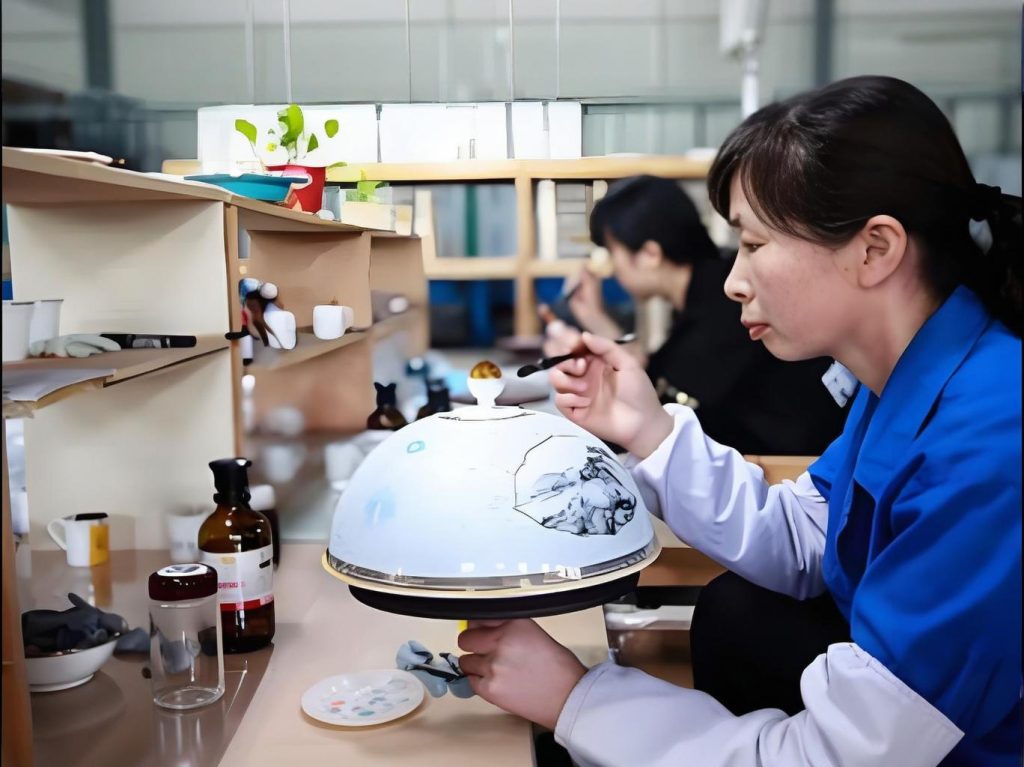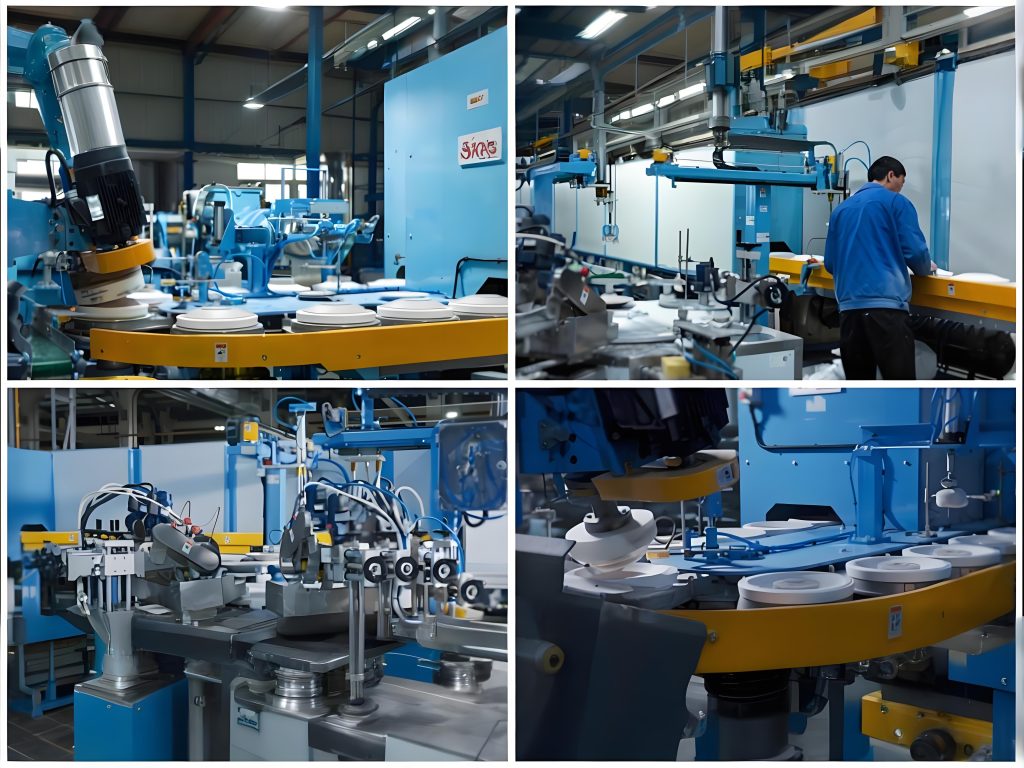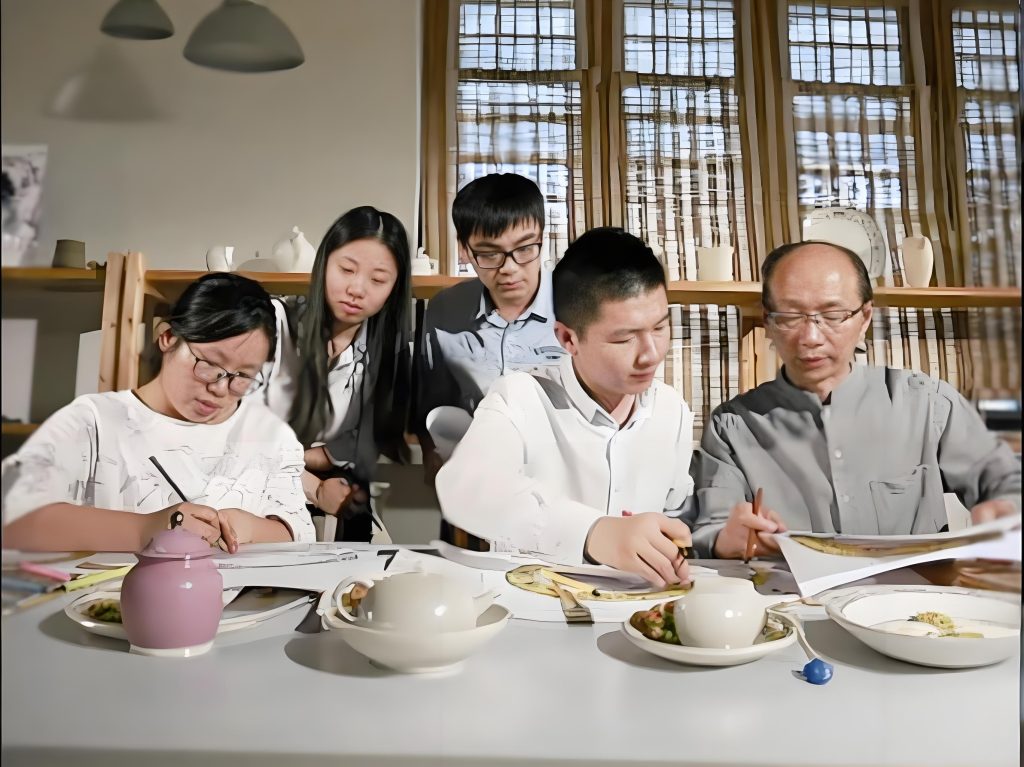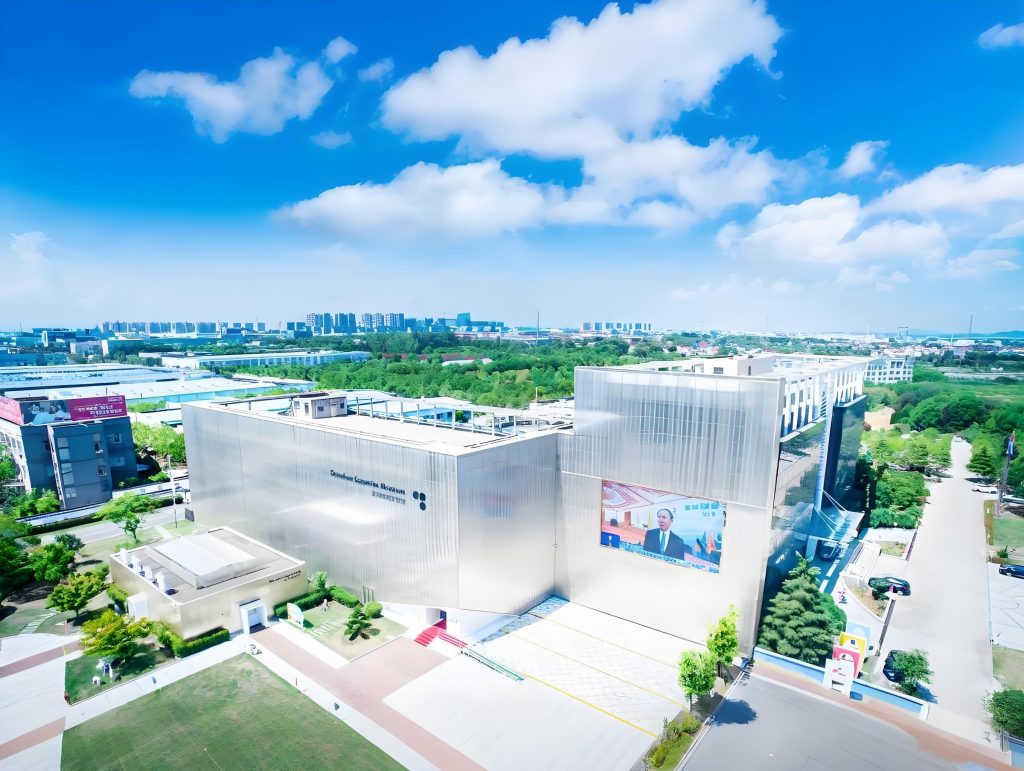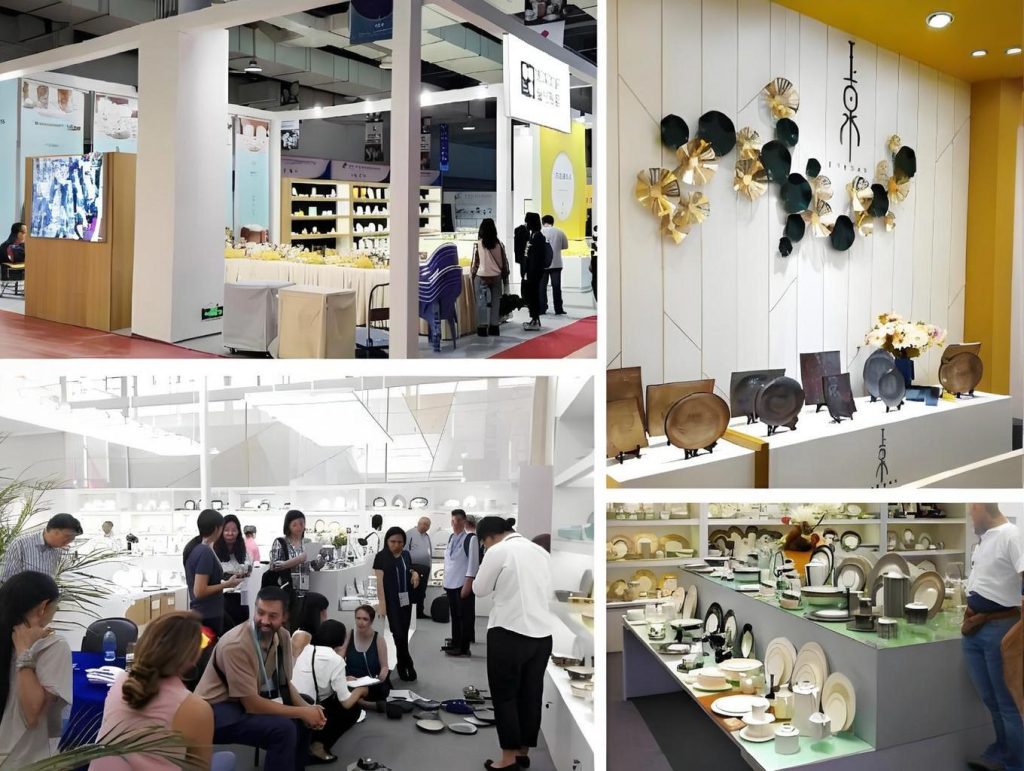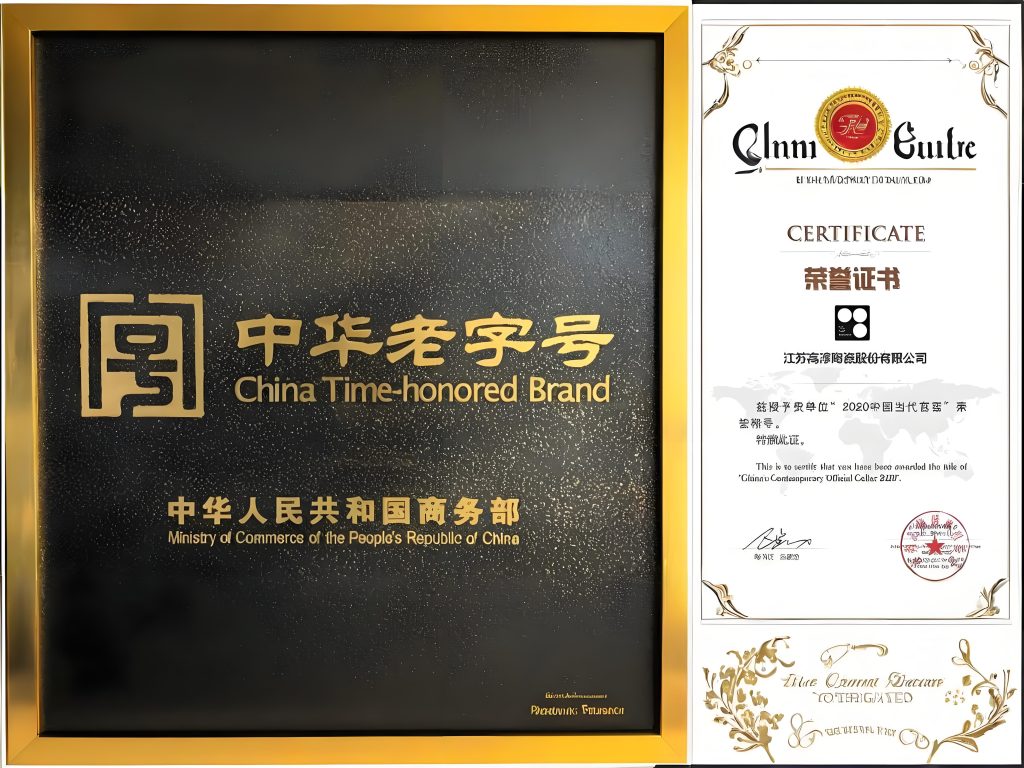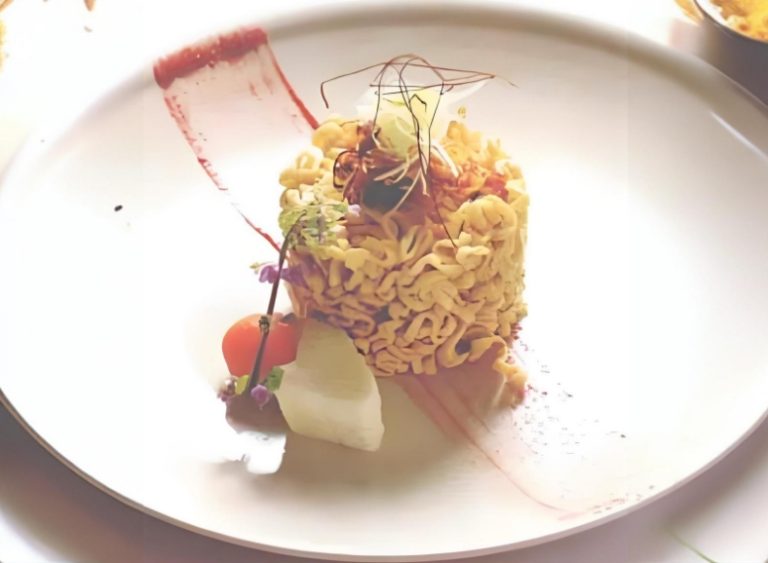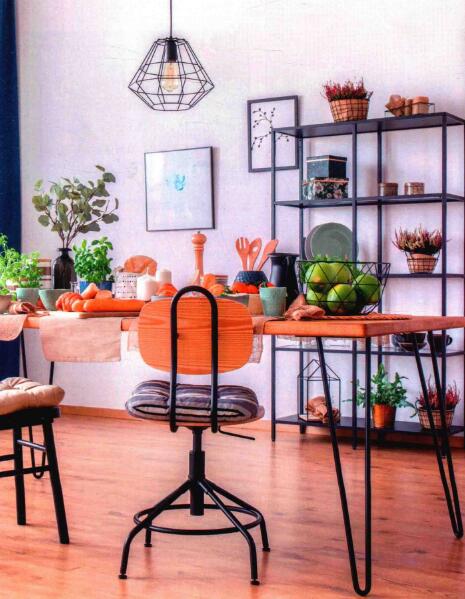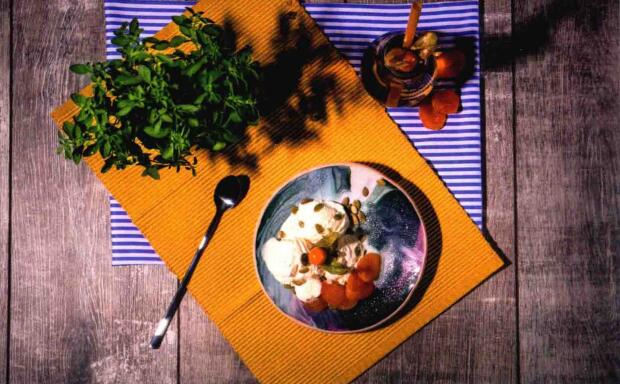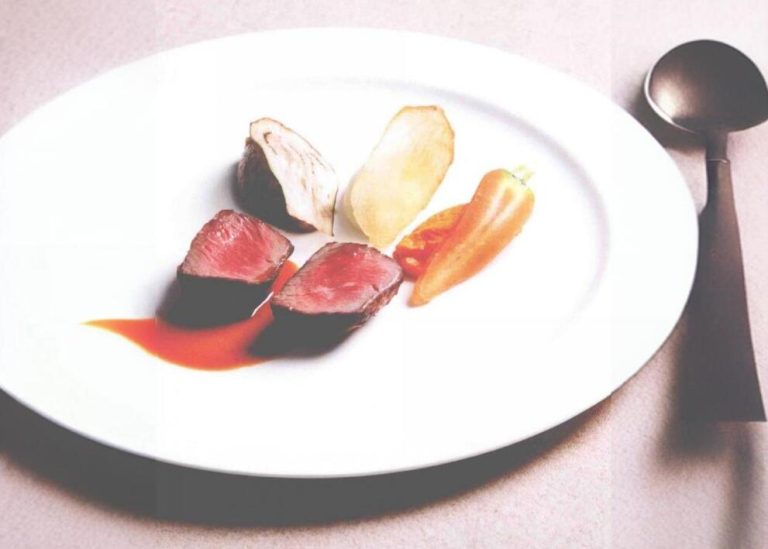Plating Techniques for Seared Scallops
The golden, tender, and juicy scallops, paired with vibrant green pea sauce, create a stunning visual display on a round plate with gently curved green edges. Carefully chosen sesame leaves and parsley sauce, matching the green hues of the peas, add a touch of natural beauty to the dish, balancing elegance with the lively energy of the culinary creation.
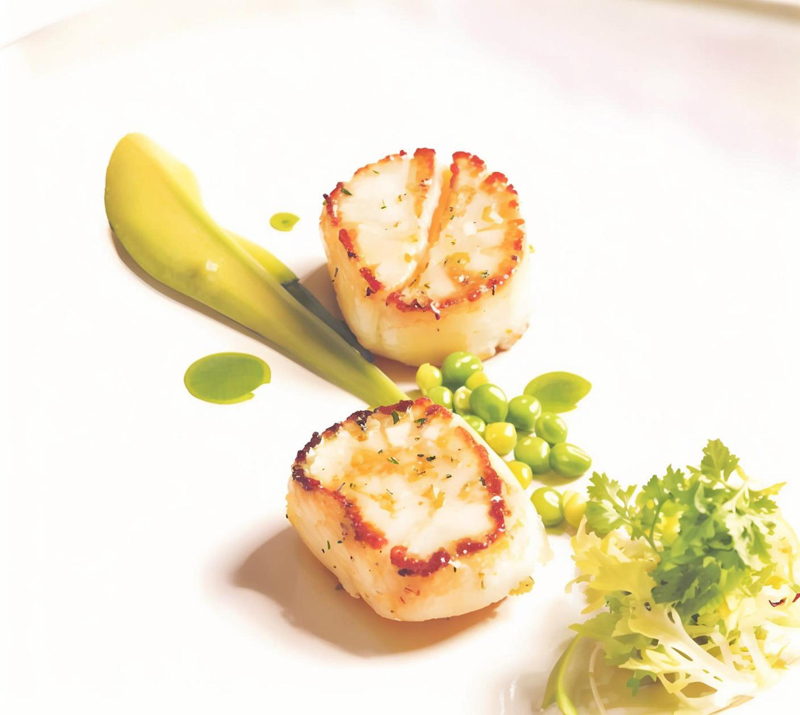
Ingredients: Dried scallops, green peas, pea shoots, sesame leaves, parsley, etc.
Instructions: First, cook the green peas and parsley separately, then blend them into a thick puree using a blender to prepare for plating. Next, sear the two fresh scallops in a pan until they are golden and crisp on the outside but only half-cooked inside, then remove from the pan.
Scene 1: A Spoon Sketches Natural Elegance
Plating Method
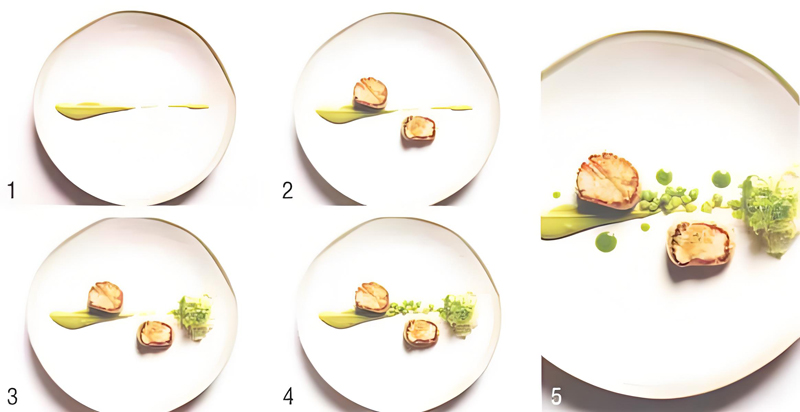
① Scoop a spoonful of green pea puree, and with a gentle, slightly angled motion, like writing calligraphy, sweep it across the center of the plate from left to right. Create a natural gradient effect, as if gracefully leaving a stroke of green calligraphy on the plate.
② Using a base of green pea puree, place the two seared scallops slightly overlapping near the center of the plate.
③ To create a more balanced visual effect, gather the sesame leaves and place them at the tail end of the green pea sauce.
④ Arrange the green peas evenly between the scallops and arugula to create a sense of depth on the plate.
⑤ Finally, use a green parsley sauce to dot the area around the scallops with circles of varying sizes.
Scene 2: a Natural Symphony of Pea Shoots and Green Peas
On a subtly curved plate, the focus is drawn to the food itself, with a splash of green pea sauce against a backdrop of pure white. Delicately seared scallops, tender pea shoots, and green peas are evenly spread across the sauce. The generous use of negative space not only highlights the presence of the main ingredients but also allows the complementary elements to harmonize, like musical notes elegantly flowing across a green score.
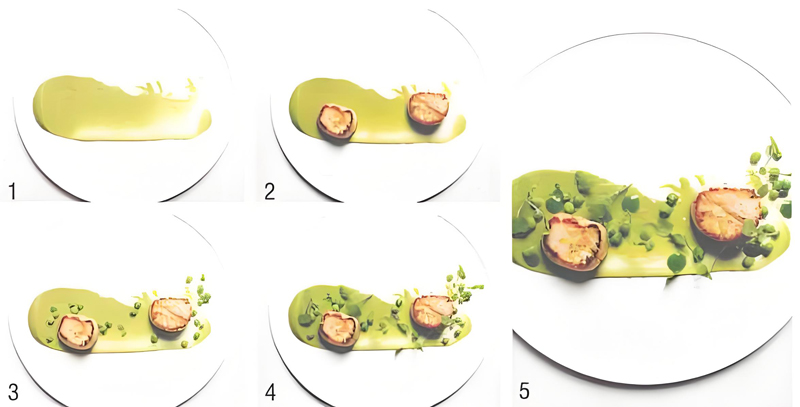
Plating Method
① Using a spatula, take an appropriate amount of green pea paste and spread it in the center of a white porcelain plate. As you finish, naturally taper off the edges to create a feathery effect, forming a broad streak with the green pea puree.
② Place a seared scallop on each side, not necessarily aligned, but staggered slightly up and down to create a casual, natural look.
③ Carefully scatter the green peas irregularly over the empty spaces in the green pea paste. You can also add more peas to the blank area on the right side.
④ Arrange small pea shoots in an S-shape around the scallops and green peas.
⑤ Drizzle some olive oil, then add a few drops of dark celery sauce, giving the green dish a glossy and layered appearance.
If you have any questions or need to custom dinnerware service, please contact our Email:info@gcporcelain.com for the most thoughtful support!

